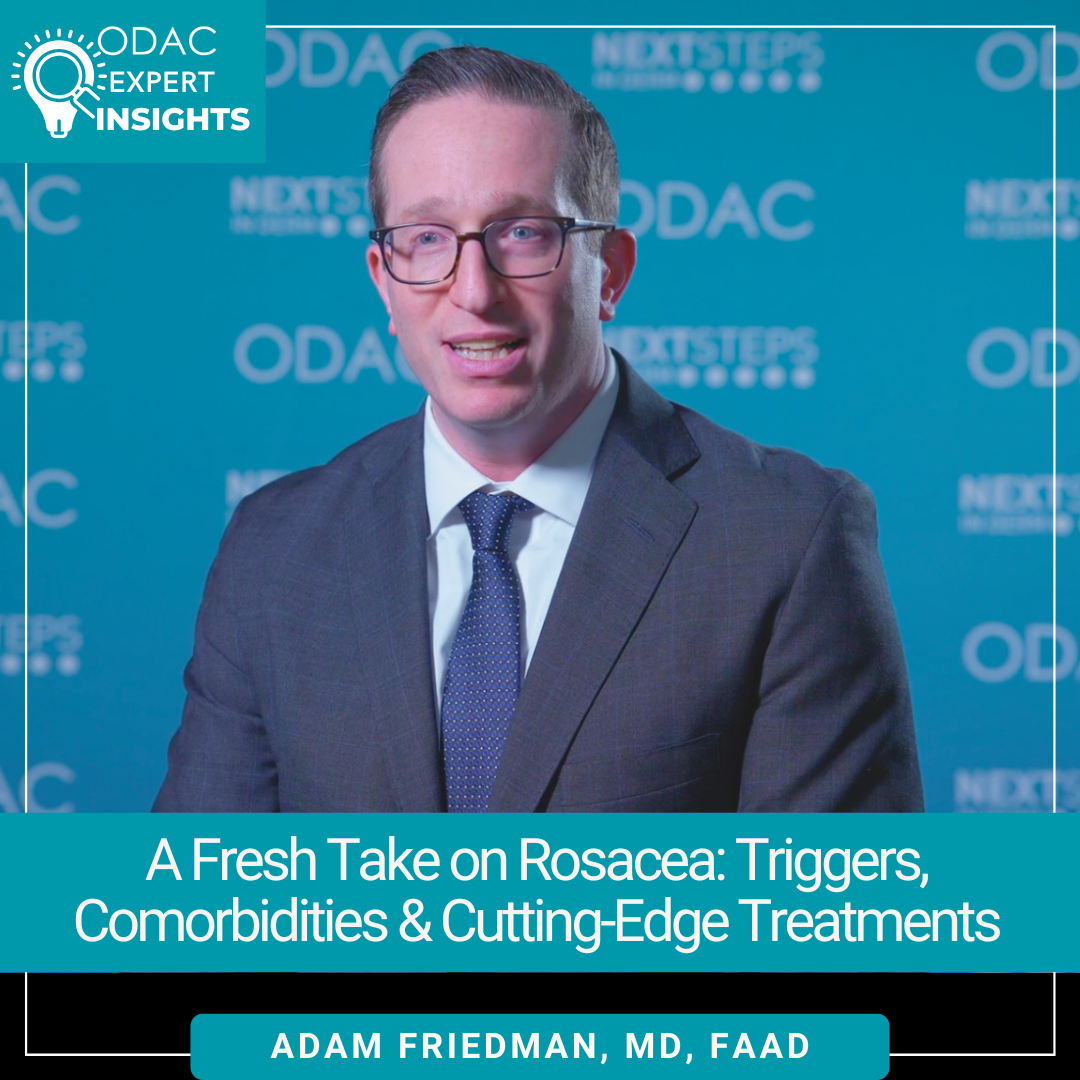ODAC Co-Chair Dr. Adam Friedman says some nuanced changes in recently published scientific literature have changed the way he approaches rosacea. Next Steps in Derm, in partnership with the ODAC Dermatology Conference, interviewed Dr. Friedman, who addressed the latest understanding of rosacea triggers. Should your still tell your rosacea patients to avoid coffee? Find out what the latest research says. Learn why dermatology clinicians may want to consider existing comorbidities in their rosacea patients. Hear Dr. Friedman’s top strategies for managing rosacea, and why dermatology clinicians should be familiar with cosmetic camouflage. Plus learn about three recently FDA-approved rosacea therapies.
Further Reading
If you want to read more about treating rosacea, check out the following articles published in the Journal of Drugs in Dermatology:
Vessel-Targeting Therapies for the Management of Rosacea: A Review of Current Evidence
ABSTRACT
Rosacea, a condition defined by persistent erythema, may also present with flushing, telangiectasias, edema, enlarged facial blood vessels, and/or vascular nets. The pathophysiology of rosacea is believed to be a culmination of neurovascular dysregulation, altered immune detection and response, and long-term changes to the skin’s superficial vasculature. Alterations in the vasculature result from increased angiogenesis, disruptions in cutaneous vascular homeostasis, and endothelial cell damage from inflammatory byproducts. These aberrant processes culminate in progressive vascular changes, beginning with increased blood flow to affected skin, followed by persistent vasodilation and proliferation, and ultimately permanent vascular changes.
ABSTRACT
Background: The treatment of rosacea is complicated as there are multiple pathogenic factors in play resulting in a myriad of clinical signs and symptoms including facial redness.
Objective: The primary objective was to evaluate the efficacy and tolerability of a non-prescription anti-redness regimen in patients with rosacea.
Methods: Thirty subjects with rosacea-induced facial erythema were enrolled in this single site, monadic study. The test regimen consisted of a treatment serum, redness-reducing moisturizer, and sunscreen. The test products are formulated with ingredients curated to address the multifactorial pathogenesis of facial redness. Investigator and subject self-assessment for efficacy and tolerability were performed at baseline, weeks 4 and 8. Non-invasive assessments for facial redness and skin hydration were conducted at all time points.
Results: Investigator grading showed significant improvement in facial redness of 21% at week 4 and 32% at week 8. Skin’s appearance improved as early as 4 weeks while at 8 weeks there was statistically significant improvement in fine lines 15%, radiance/brightness 37%, tactile roughness 44%, visual roughness 41%, and 26% in overall appearance. Non-invasive assessments showed statistically significant improvement in skin hydration of 28% at week 4 and facial redness of 21% by week 8. No tolerability issues were identified by the investigator.
Conclusion: Patients with rosacea often turn to over-the-counter products to reduce facial redness and improve skin’s appearance. In this study, a cosmetic skincare regimen designed to reduce facial redness demonstrated efficacy and tolerability in subjects with rosacea.
Did you enjoy this video interview? Find more here.

